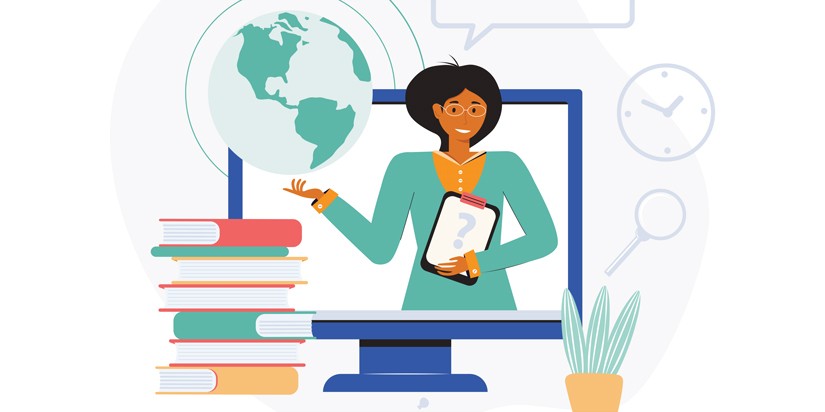
Downloads:
E-Learning by taking courses online has been around in one form or another for the past 20 years. But the past couple of years has seen e-learning on a scale that few imagined. The COVID pandemic forced schools from Kindergarten through Grade 12 to universities to cancel in-person classes and conduct all learning online.
The change was abrupt for both teachers and learners. While teachers have a great deal of experience in teaching in classrooms, few had experience in teaching classes online. The same was true of students.
Classroom learning and the face-to-face interactions that occur has many advantages. When questions arise students can ask for help immediately, either from the teacher or a fellow student.
Many classrooms structured their learning around these peer-to-peer interactions and the sense of students belonging to the learning community. There is also a sense of immediacy in a live classroom that tends to focus attention. Teachers can observe the expressions of students and see if their attention is drifting.
There is also a matter of conducting lab exercises in chemistry. The chance to perform hands-on experiments is often the most engaging aspect of learning chemistry and gives students a chance to reinforce what they are learning and actively investigate the ideas.
Online learning does have its benefits. Student safety was paramount during the pandemic and online instruction allowed students to learn from the safety of their homes. Teaching could be more interactive, as each student had equal access to the instruction.
Many of the applications that teachers employed were engaging and encouraged participation. Teachers used simulations and video demonstrations to replace in-person laboratory exercises that were a part of traditional classroom learning.
E-learning also had a somewhat different focus, away from just delivering information toward facilitating learning, leaving students to master the material on their own. Learning online requires more discipline to stay focused on the lessons, rather than becoming distracted by something else at home.
By now we know that the switch to online learning for K–12 students was a disaster. According to a report from McKinsey & Co., the impact of the pandemic on K–12 student learning was significant, leaving students on average five months behind in mathematics and four months behind in reading by the end of the school year.
Worse yet, the pandemic widened the gap in achievement between historically disadvantaged students and their peers. Those in less affluent and minority schools had an even bigger loss in their learning. High school-age students became more likely to drop out and not go on to college or university.
There was also a documented ill effect on students’ mental health, with more than a third of parents reporting that they were very or extremely concerned about the well-being of their children.
And it wasn’t just the United States that was feeling the impact of the pandemic on learning. The World Economic Forum reported on surveys of teachers from around the world. Across the board, teachers reported that as classes went online, the effectiveness of the instruction declined.
This recent history may alter your decision-making on post-secondary education. With the cost of traditional college rising, many are turning to online universities as an option. College costs have doubled since the year 2000. Much of that cost is for housing, food and transportation costs, which are not required if you are attending an online school. An online, nonprofit institution can offer degrees at lower costs and allows students to proceed at their own pace, which might mean graduating faster.
Meanwhile, the cost of going to a traditional college is getting more and more expensive. As students, we all vary in our style of learning. Some of us are auditory learners and others like to see things written down. You may be someone who works best in a structured setting, or prefers instruction that facilitates your learning and leaves you to master the concepts on your own.
The technology of teaching and learning is always changing and evolving. The same is true of students, as we experience and evaluate various ways of learning. What is the best way to learn? Maybe it’s best online, or maybe it’s in a classroom. It’s a question that is open for discussion.




